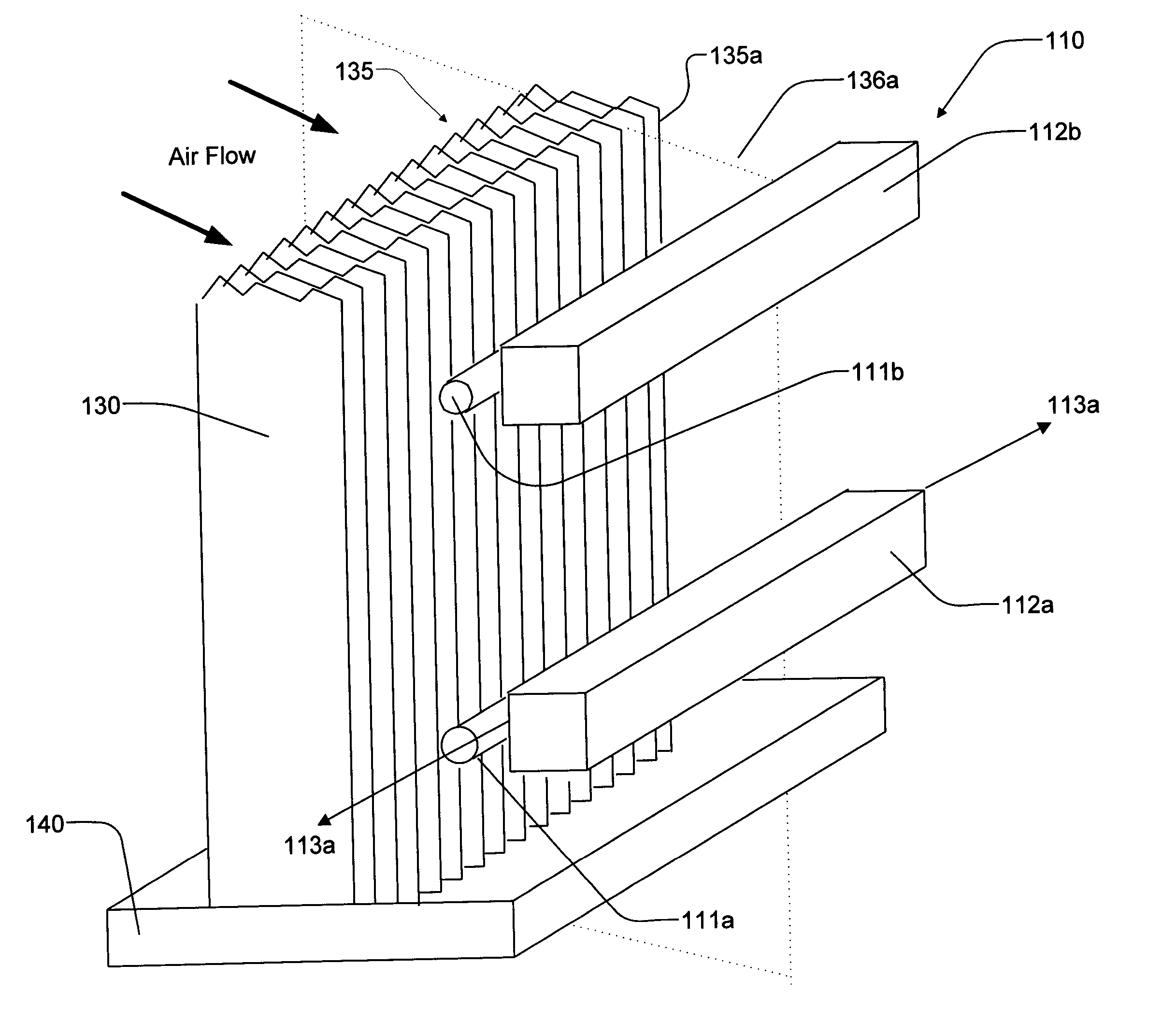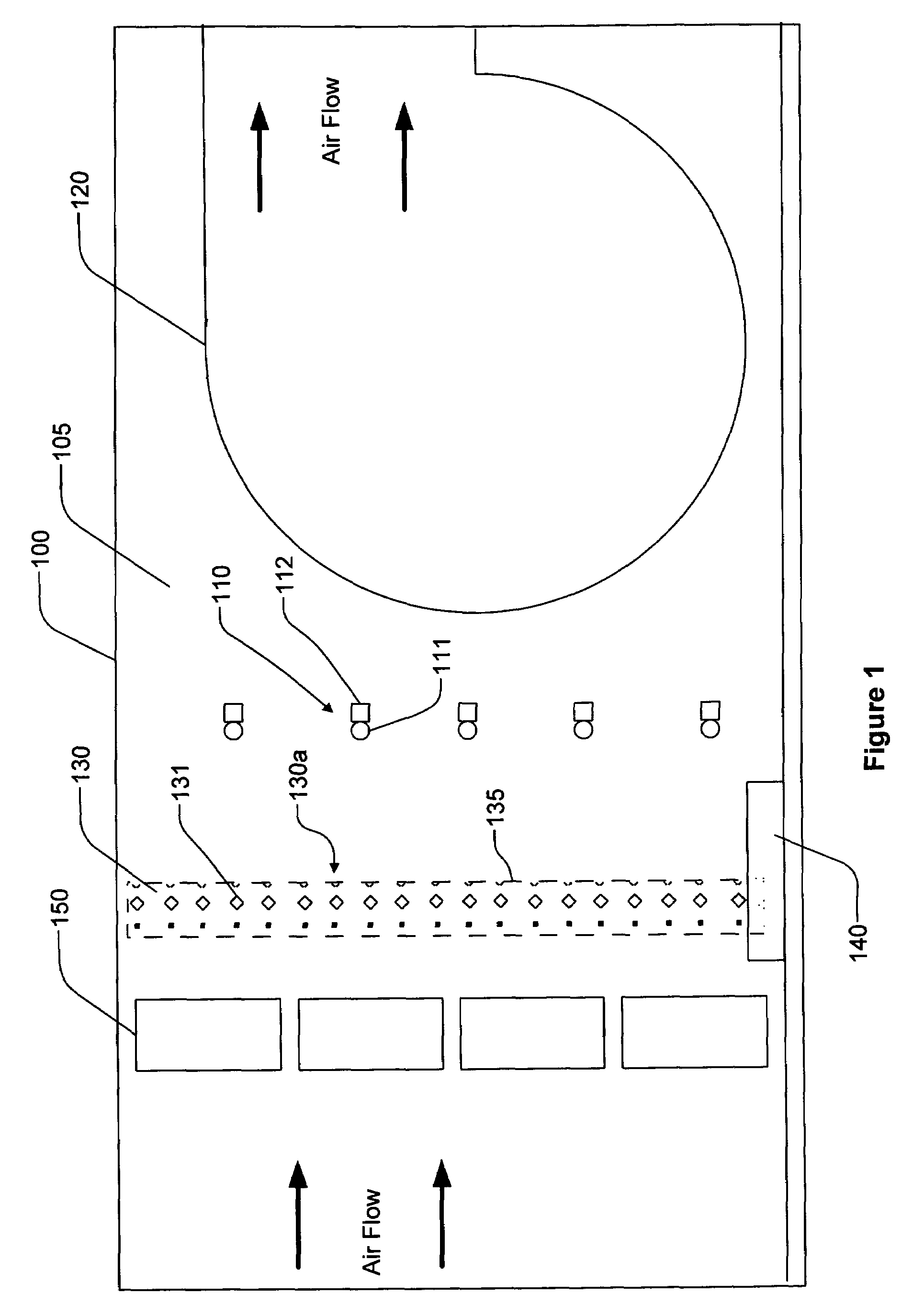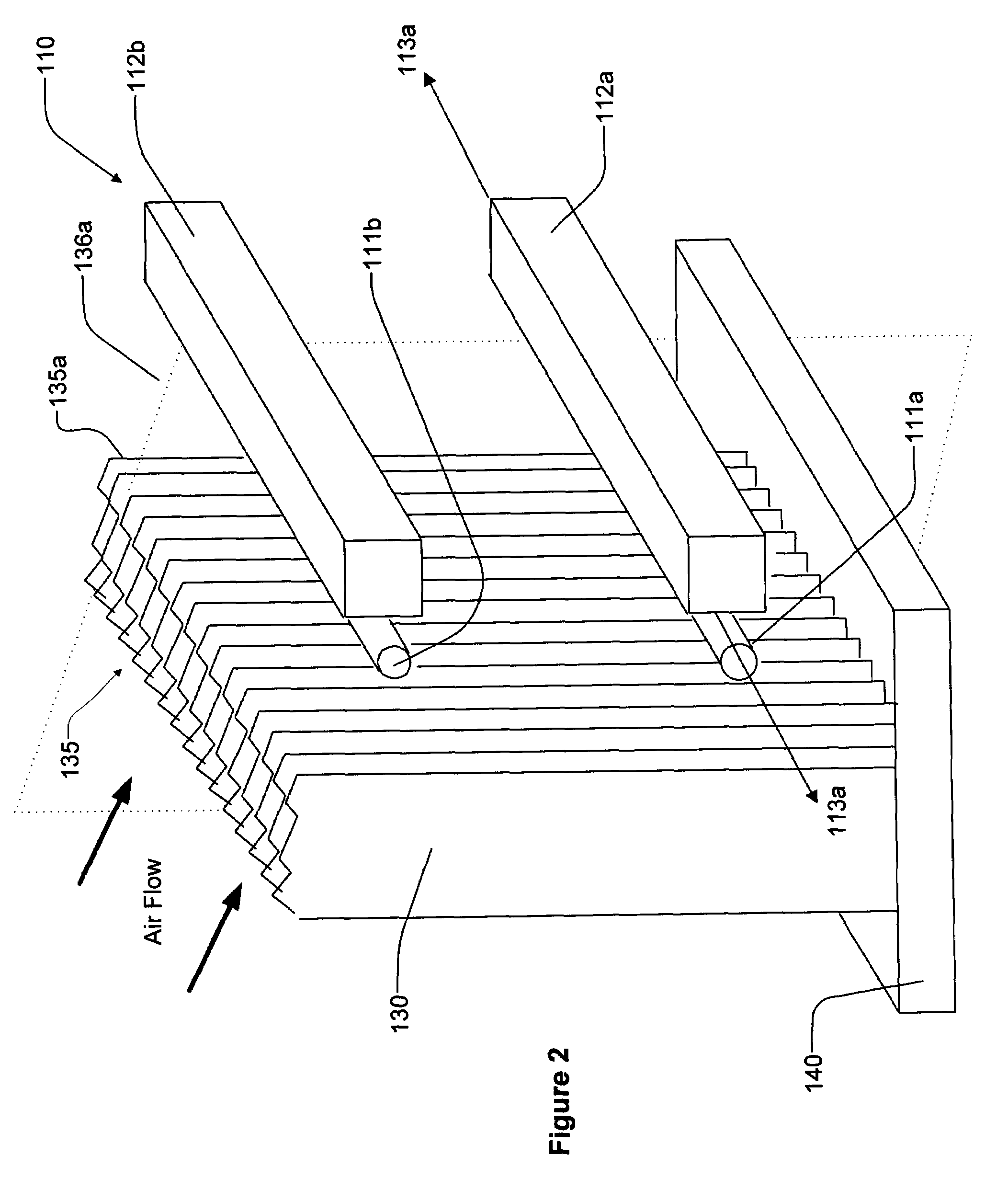UV irradiation for surface cleaning
a technology of surface cleaning and ultraviolet light, which is applied in the direction of glass tempering apparatus, glass forming apparatus, disinfection, etc., can solve the problems of affecting the heat exchange efficiency of the surface cleaning, the cost of operating and maintaining the hvac system, and the entire electrical grid shutting down on very hot days
- Summary
- Abstract
- Description
- Claims
- Application Information
AI Technical Summary
Benefits of technology
Problems solved by technology
Method used
Image
Examples
Embodiment Construction
[0054]Throughout this description, the embodiments and examples shown should be considered as exemplars, rather than limitations on the apparatus and methods of the present invention.
[0055]Referring now to FIG. 1, there is shown an air duct or plenum 100 of an HVAC system, through which air is discharged in accordance with the operation of a suitable blower or fan 120. A number of germicidal lamps 110 are mounted in a chamber 105 of the air duct 100. The germicidal lamps 110 include a germicidal tube 111 coupled to and carried by a base 112. For the germicidal lamps to operate effectively in the harsh environs of an air duct, it is preferred that germicidal lamps specifically designed for such environments be employed. In particular, the germicidal lamps sold by the assignee of this invention, Steril-Air U.S.A., Inc, and sold under the trademark, “UVC Emifter,” are preferred. The base 112 contains electrical circuitry and ballast for energizing the germicidal tube 111 to emit ultrav...
PUM
| Property | Measurement | Unit |
|---|---|---|
| temperature | aaaaa | aaaaa |
| depth | aaaaa | aaaaa |
| germicidal wavelength | aaaaa | aaaaa |
Abstract
Description
Claims
Application Information
 Login to View More
Login to View More - R&D
- Intellectual Property
- Life Sciences
- Materials
- Tech Scout
- Unparalleled Data Quality
- Higher Quality Content
- 60% Fewer Hallucinations
Browse by: Latest US Patents, China's latest patents, Technical Efficacy Thesaurus, Application Domain, Technology Topic, Popular Technical Reports.
© 2025 PatSnap. All rights reserved.Legal|Privacy policy|Modern Slavery Act Transparency Statement|Sitemap|About US| Contact US: help@patsnap.com



